news
Outside the Gate: The Seduction of Belonging in the Charleston works of Elizabeth O’Neill Verner
“To the artist the spirit rather than the letter is the important thing.” [1]
Thus wrote Elizabeth O’Neill Verner (1883-1979), a sketcher and printmaker focused on depicting the stark contrasts between light and dark in her hometown of Charleston, South Carolina. Light and dark is meant both literally and figuratively here, as Verner did much of her drawing out of doors on the streets under the brilliant South Carolina sunlight. She focused her gaze on the obscured edges of a shady garden or on a tree-shrouded aristocratic home peeking from behind a wrought iron fence. Her most enchanting images are ones in which she let the play of light and shadow dapple across surface creating a sense of calm and nostalgia, as seen in Gates of the Mikell Jenkins House. (Fig. 1) Of Verner's numerous sketches and etchings of Charleston, some were compiled into book format and published, accompanied by lyric essays by Verner herself on the history and culture of the city. The images in this article, which are representative of her graphic work from the 1920's and 30's, were taken from two of Verner's publications, Mellowed by Time (1941) and Prints and Impressions of Charleston (1945). While her depictions of Charleston are sentimental, Verner never pictures a Southern belle to complete the air of ante-bellum prosperity. She relied instead on a completely different cast of characters.
2015 Symposium Reflection

Creative Conflict - The 31st Annual Boston University Graduate Student Symposium on the History of Art & Architecture, February 27th & 28th, 2015
This two-day event was generously sponsored by The Boston University Center for the Humanities; the Boston University Department of History of Art & Architecture; the Museum of Fine Arts, Boston; the Boston University Graduate Student History of Art & Architecture Association; and the Boston University Art Gallery at the Stone Gallery.
On February 26, 2015, news outlets around the world showed video footage released by Islamic State militants depicting the violent destruction of antiquities and artifacts at the Mosul Museum in Iraq. The vicious spectacle served as a sober reminder that a commitment to the preservation of art and cultural heritage is far from a foregone conclusion in contemporary life. The following day, the Boston University History of Art & Architecture community gathered at the Boston University Art Gallery (BUAG) for the keynote talk of the 31st Annual Graduate Student Symposium, titled “Creative Conflict.” In his address, “Killing Identity: Heritage Destruction in the Syria and Iraq Conflicts,” Dr. Richard M. Leventhal, Executive Director of the Penn Cultural Heritage Center (PennCHC) at the Penn Museum and Professor in the Department of Anthropology at the University of Pennsylvania, foregrounded the Mosul footage, stressing that cultural heritage is regularly endangered by conflicts worldwide. He explained its inextricable links to both memory and national and cultural identity in places like Syria and Iraq. Leventhal developed his lecture by outlining some of the work undertaken by the PennCHC, which implements a bottom-up, community-driven approach to help curators, scholars, and activists in conflict-stricken areas protect and safeguard cultural heritage. Dr. Leventhal ended his talk with a “Post-conflict Postscript” that introduced aspects of his own research on historical conflicts in the Yucatán, Mexico. The keynote address sparked an engaging and thoughtful Q&A session, which highlighted the importance of identity and community-building for areas impacted by conflict. More
Creating Wonder: A Discussion with Kristi McMillan, Assistant Curator of Education for Visitor Engagement at the Birmingham Museum of Art
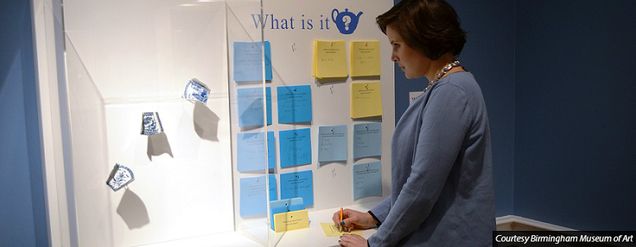
This interview focused on technology in educational programming at museums and was conducted via email between Amy Williamson and Kristi McMillan, Assistant Curator of Education for Visitor Engagement at the Birmingham Museum of Art (BMA) in Birmingham, Alabama. In summer and fall of 2014, Williamson served as an intern at the BMA.
Q: Talk about the BMA's avenues for visitor engagement.
We engage visitors with artworks through facilitated and self-guided interpretation. Facilitated interpretation can include tours, workshops, lectures, performances, and outreach; self-guided interpretation is defined more broadly, from exhibition design and signage to interactive spaces, technology, and printed material. Education, curatorial, communications, and new media staff work together on these efforts. We’re successful if we can build a bridge between a visitor and an object; provide understanding or create wonder about human creativity; or best of all, help a visitor associate an object – perhaps made in another part of the world at a different time by people living lives wholly unlike theirs – with their own experience. This definition of success may seem lofty and hard to measure, but we see sparks of connection happen every day.
Research and Scholarship for the 21st Century: The 2015 Art+Feminism Wikipedia Edit-a-thon

On March 7, 2015, I attended the Art+Feminism Wikipedia Edit-a-thon held at the Massachusetts College of Art and Design (MassArt) in Boston, Massachusetts. [1] Only a year earlier, in March 2014, the same week as International Women’s Day, Art+Feminism founders Siân Evans, Jacqueline Mabey and Michael Mandiberg organized the first Edit-a-thon in New York City. Their goal was to increase the small number of articles written about women in the arts and the number of women editors (who make up only about 10% of Wikipedia editors) by offering training and guidance to participants. [2] It spurred simultaneous events in twenty other U.S. cities and in Canada, Europe, and Australia. [3] In its second year the Art+Feminism Wikipedia Edit-a-thon has expanded to over 75 satellite events globally, “resulting in the creation of nearly 400 new pages and significant improvements to 500 articles on Wikipedia.” [4] This event was of particular interest to me since it intersects both the arts and technology, areas in which women’s participation is still met with obstacles, demonstrated by the work of groups such as the Guerilla Girls or individuals like Anna Sarkeesian, a feminist media critic who focuses on the harassment of women in online gaming culture and sexist representation of female characters in video games. [5] More
Early Modern Funerary Portraits Painted on Metal and Stone Supports: Results of Field Work in Rome
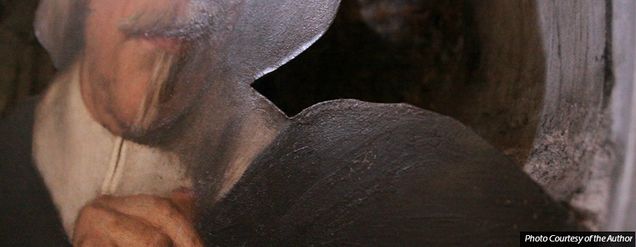
In the spring of 2013, while conducting dissertation research in Rome, I noticed the funerary portraits of Gaspare Rivaldi and Ortenzia Mazziotti in the church of Santa Maria della Pace. Intrigued by their appearance, I inquired of the sacristan as to their material. (Fig. 1) To my surprise, he promptly tapped upon Signore Rivaldi’s visage as on the hood of a car, pointed to the over-painted rivets affixing the artwork to its marble frame, and said “aluminum.” [1] Although chemists did not produce pure aluminum until the nineteenth century, the sacristan correctly noted the support’s metallic composition. [2] Surprisingly, subsequent research revealed no investigations of these portraits or any others in situ in Rome painted in oils on metal plates or stone panels. [3] In fact, the Rivaldi/Mazziotti portraits of ca. 1611-1614 contradict expectations to find such artworks nowhere other than in early modern Wunderkammer collections as records of a Mannerist “evolution of taste and interest.” [4] But did these funerary effigies represent isolated instances or exemplars of a larger phenomenon overlooked by art historians? More
Book Review: ‘Red Kant: Aesthetics, Marxism, and the Third Critique’
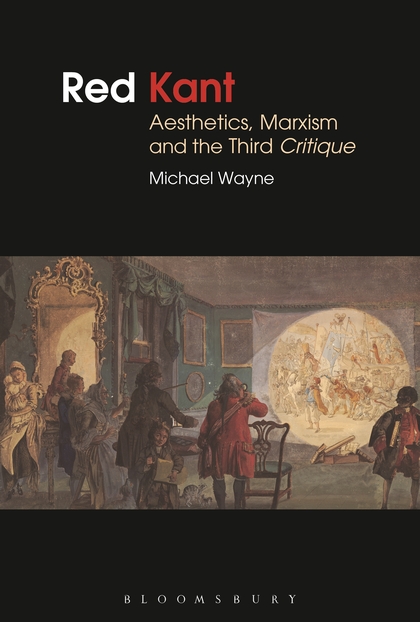
MICHAEL WAYNE.
Red Kant: Aesthetics, Marxism, and the Third Critique.
London: Bloomsbury Publishing, 2014. 240 pp.
$112
9781472511348.
Screen media scholar Michael Wayne’s new book, Red Kant: Aesthetics, Marxism, and the Third Critique, offers a cogent and valiant defense of the necessity for sophisticated thinking about aesthetics in our contemporary moment. As with Wayne’s previous work, particularly on cinema and media, Red Kant focuses on the relationship between Marxist social theory and contemporary aesthetics. But unlike his earlier books—Political Film: the Dialectics of Third Cinema (London; Sterling, VA: Pluto Press, 2001), Marxism and Media Studies: Key Concepts and Contemporary Trends (London; Sterling, VA: Pluto Press, 2003), and Marx’s Das Kapital for Beginners (Hanover, NH: For Beginners, 2012)—Red Kant extends Wayne’s range into eighteenth-century philosophy and its influence on subsequent Marxian thinkers.
Book Review: ‘Permission to be Global/Prácticas Globales’
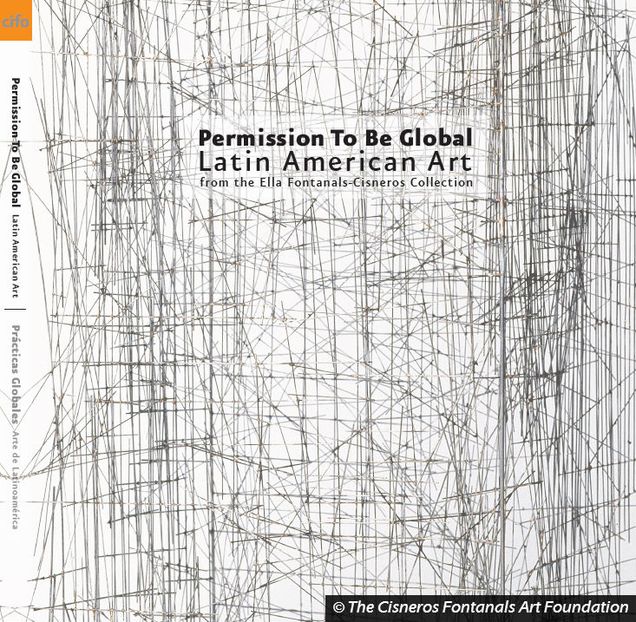
JEN MERGEL and LIZ MUNSELL.
Permission to be Global/Prácticas Globales: Latin American Art from the Ella Fontanals-Cisneros Collection.
Miami: The Cisneros Fontanals Art Foundation, 2013. 135pp.
$40.00 paper
9780615911014
In the spring of 2014 the Museum of Fine Arts, Boston (MFA) mounted Permission to be Global/ Prácticas Globales: Art from the Ella Fontanals-Cisneros Collection, the first exhibition of Latin American art in its 138-year history. Permission to be Global debuted at the Fontanals-Cisneros Art Foundation (CIFO) during Art Basel Miami in December 2013 before travelling to Boston. Jointly organized by MFA and CIFO curators, the exhibition and accompanying catalogue present some 60 works from Fontanals-Cisneros’s private collection made by Latin American artists such as Lygia Clark, León Ferrari, Cildo Meireles, and Ana Mendieta, along with many emerging artists, including Eduardo Abaroa and Daniel Medina.
‘Pontormo and Rosso Fiorentino: Diverging Paths of Mannerism,’ Palazzo Strozzi, Florence, Italy
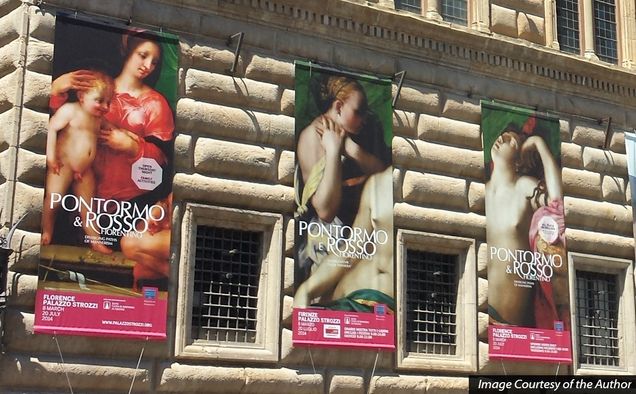
Presented at Florence's Palazzo Strozzi March 8 - July 20, 2014, the exhibition Pontormo and Rosso Fiorentino: Diverging Paths of Mannerism offered an illustration of the equally divergent approaches taken by European and American scholars to the often controversial study of Mannerist painting. While American scholars frequently characterize the artifices of Mannerism as a diversion from (or even perversion of) Renaissance ideals, exhibition curators Carlo Falciani and Antonio Natali instead sought to establish Jacopo da Pontormo and Rosso Fiorentino's individual and divergent approaches to the Mannerist aesthetic, exclusive of any reference to the normative ideals of Renaissance art. Viewing the exhibition freed from the traditional need to justify or rehabilitate Mannerist art was refreshing, and allowed this American viewer to concentrate completely on the works at hand.
‘Jim Hodges: Give More than You Take,’ Institute of Contemporary Art/Boston

What will you leave behind when you die? This appeared to be the question asked in the recent mid-career retrospective Jim Hodges: Give More than You Take at the Institute of Contemporary Art in Boston (ICA). In organizing this exhibition, the ICA's curators worked closely with Hodges to install artworks representative of nearly three decades of the artist’s work, made of a hodgepodge of materials ranging from delicately applied gold leaf to human spittle. Hodges’ voice was unmistakably present, and, considering the deeply personal nature of many of the pieces shown, it was a welcome addition. Yet, even in this celebratory exhibition of the artist's life’s work, the presence of his contemporaries and predecessors – his influences and inspiration – loomed large. The retrospective exhibition is, in effect, a homage, not just to its subject, but also to those he has followed and loved throughout his career. More
Editors’ Introduction

We are excited to launch the online art journal SEQUITUR. As we begin publication, we join a lengthy and inspiring tradition of scholarship on art and architectural history. It is with reverence for this legacy, but with an eye to the present and future that we initiate this endeavor, aimed at sparking germane conversations about current happenings in the field and bringing fresh, critical perspectives to the people, events, and scholarship that shape art and architectural history today. In this inaugural issue, we take a global perspective on art collecting and exhibition practices. Our lens encompasses the importance of classical antiquity in the display of art in nineteenth-century Boston, the development of Mannerism in Italy, and a traveling contemporary Latin American art exhibition. The range of essays, interviews, and reviews also covers a long history, from early modern displays of art in the seventeenth century to today. What transpires is the versatility of the exhibition medium: it can be a vehicle to highlight pedagogy, scholarship, and innovative experimentation. More